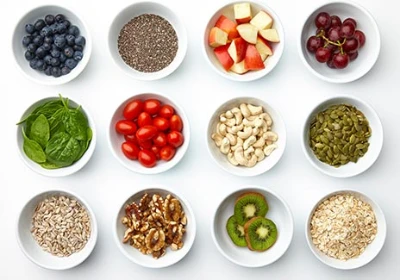
Carb counting is one method that may help you manage your diet or eating habits. Some people love the freedom of food choices when carb counting. If you haven’t learned carb counting, find out how it works here. And be sure to talk to your healthcare provider or nutritionist about a healthy eating plan that is right for you.
Learning how to count carbs is a skill that may take some time to master, but with the help of your healthcare team and tools found here on TeamingUp, we are sure you'll get the hang of it in no time!
Some people love the freedom of food choices when carb counting
Here are some tips to help polish your skills:
1. Measure portions for accuracy
Measuring your food is best, but that grows old quickly and leaves you with extra things to wash. Many people ditch the measuring cups once they feel comfortable with estimating their portions. Unfortunately, it’s easy for a 1/3-cup serving of rice over time to inch its way to a 1/2-cup serving and then to something bigger. So try measuring your foods at least twice monthly.
2. Know how much your plates and bowls hold
The food label tells you that a cup of your favorite cereal has 20 grams of carbohydrate, but how much did you pour into your bowl? Take time to learn how much your bowls, cups, and glasses hold. Fill them with water and pour the water into a measuring cup. If you want to limit your portion to just a cup, use a bowl that’s just big enough for your cereal and milk.
3. Try a food scale with programmed nutrition data
Size matters. The carb count in your apple, orange, or potato is dependent on the food's weight. Place your food on a smart food scale to learn the nutrition facts for the amount of food in front of you.
4. Calculate carbs in recipes
Learn the carb counts of family favorite recipes using an online nutrient database, Such as supertracker. Enter each ingredient and the number of servings per recipe. The website does the rest.
5. Guesstimate combination foods
The carbs in casseroles, breaded chicken, stews, and other combination foods are especially difficult to estimate. Use these rules of thumb learned over the years by colleagues and patients.
- Submarine rolls: 15 grams of carb per 2 inches or 1 ounce
- Breaded meats: 15 grams of carb for 6 chicken nuggets or single chicken or fish patty
- Soups and stews: 15 grams if it’s mostly broth, non-starchy vegetables and meat

6. Look for hidden carbs
Plenty of foods, like salad dressings and spaghetti sauce, have just a few grams of carbohydrate in a small serving. If your serving is large or if you eat several foods with a few grams of carb each, you might consume an amount heftier than you think. Read labels carefully.
7. When out, ask for the facts
Most chain restaurants and many others have nutrition facts available online. But when dining out, assume that most sauces have some sugar or starch or both. Do your best to not be too hard on yourself; it takes practice and patience, but soon you’ll be a carb counting pro. Remember, even when it comes to eating healthy, you can count on us. We’re all about giving you tips you can really use.


